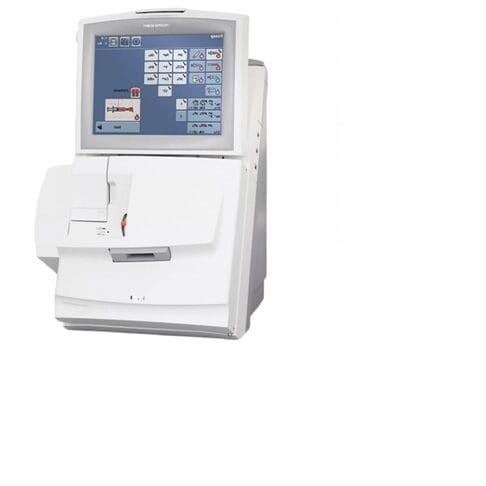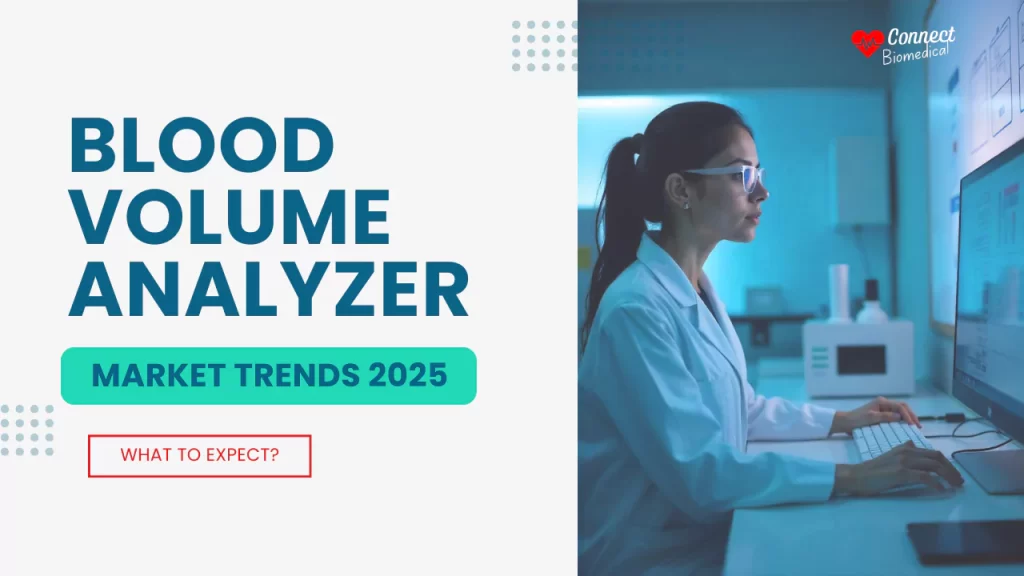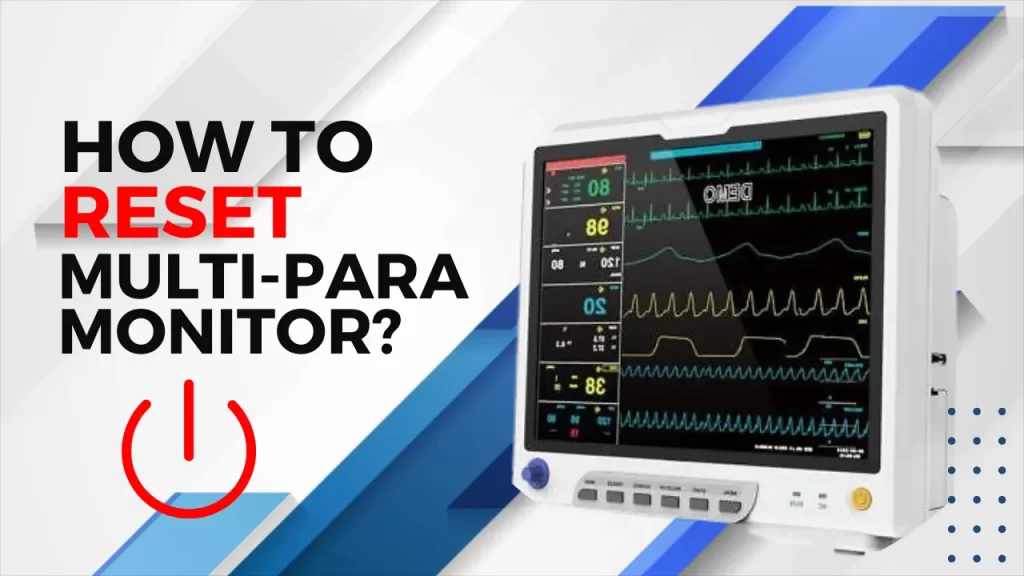The healthcare industry is evolving rapidly driven by innovative technologies enhance the diagnostics and treatment precision. Among these advancements, blood volume analyzers have emerged as crucial tools in monitoring patient health.
The blood volume analyzer is essential for contemporary medical diagnostics, and the worldwide market is expected to grow considerably by 2025.
Significant trends involve the creation of precise, non-invasive monitoring options that focus on patient comfort and minimize complications.
The growing emphasis on personalized medicine and early intervention further accelerates their adoption in clinical settings. By enabling prompt and precise evaluation of essential health indicators, blood volume analyzers are transforming patient care and addressing diverse medical challenges.
As the market continues to grow, these innovative devices are set to redefine diagnostic capabilities, improving healthcare outcomes and solidifying their role as indispensable tools in modern medicine.
What Is A Blood Volume Analyzer?
A blood volume analyzer is a medical device use in the assessment of a patient’s hemodynamic status, particularly in conditions such as heart failure, trauma, and shock.
These devices use techniques such as dilution methods, radioisotope methods, and non-invasive optical sensors to assess TBV.
Precise blood volume assessment is crucial in critical care, cardiology, and haematology, aiding physicians in handling surgeries, trauma recovery, and chronic illnesses.

Blood volume analyzers offer important information that aids in treatment choices, especially for disorders related to blood loss or circulation problems. Due to technological progress, these devices have become more precise, effective, and easy to use.
As the demand for precise diagnostics grows blood volume analyzers are increasingly integrated into both hospitals and outpatient care settings, expanding their role in modern healthcare.
Market Growth and Projections
The worldwide blood volume analyzer market is witnessing significant expansion driven by the increasing need for precise and rapid diagnostic devices in healthcare facilities.
Key elements fuelling this growth consist of technological progress in non-invasive techniques, the rising occurrence of chronic illnesses, and the heightened focus on personalized medicine.
Additionally, innovations in portable and AI-integrated devices are enhancing the accessibility and efficiency of blood volume monitoring, making these tools essential in critical care and surgical settings.
Several Factors Contribute to This Growth
Technological Advancements
Continuous innovations and advancements for more accurate and easier to use device has broadened the possible applications of blood volume analyzer. However, non-invasive options are increasing adopting due to their ease of use and ability to provide instant results without requiring needles or invasive procedures.
These advancements improve patient comfort and safety, promoting broader acceptance in medical environments, as these advance devices provide notable advantages in real-time tracking and enhance overall patient care.
Rising Incidences of Chronic Diseases
As the global population ages and lifestyle-related diseases increase like heart disease, diabetes, and kidney failure often leading to complications that require careful blood volume monitoring, especially in critically ill patients.
Cardiovascular disease rank as the foremost cause of the mortality worldwide, estimated to be approximately 17.9 million lives annually. With the aging global population and the rising occurrence of these conditions, the need for blood volume analyzers is anticipated to rise.
These devices are essential for assisting healthcare professionals in making knowledgeable choices, escalating the demand for these technologies.
As healthcare systems in developing regions improving the demand for more advanced diagnostic equipment like blood volume analyzers is increasing. With enhanced healthcare infrastructure and greater access to medical facilities, there is a growing focus on adopting technologies that enable accurate patient monitoring.
Governments and private organizations are investing heavily in healthcare and driving market growth, additionally, current research is advancing the development of blood volume analyzer devices for delivering instant results in urgent care scenarios.

Blood Volume Analyzer Market Trends for 2025
Increased Adoption of Non-Invasive Blood Volume Analyzers
By 2025, The blood volume analyzer market is poised to shift towards non-invasive technologies fuelled by the need for safer and more comfortable diagnostic approaches. Traditional techniques like dye dilution and radioisotope methods often involve patient discomfort and risks.
In contrast, non-invasive solutions such as near-infrared spectroscopy and ultrasound-based methods, offer faster results and enhanced patient comfort by eliminating the need for direct bloodstream access.
NIRS, utilizing light to measure blood volume, allows for real-time, ongoing monitoring, rendering it especially useful in intensive care units and emergency departments.
As these technologies become more widespread, producers are enhancing algorithms and device sensitivity to guarantee clinical dependability.
This trend is evolving diagnostics, extending the benefits of non-invasive blood volume analyzers beyond hospitals to home care and remote settings, improving patient outcomes, and reducing overall healthcare costs.
Integrating Blood Volume Analyzers with HER
The integration of blood volume analyzers with electronic health records and digital health platforms will become a key trend enabling seamless tracking of patient data over time.
This integration enables healthcare professionals to make better informed choices, minimize human mistakes, and enhance patient care.
Numerous blood volume analyzers are designed to automatically capture and transmit data to EHR systems, improving efficiency and precision.
Additionally, IoT-enabled devices will allow real-time data transmission, supporting remote monitoring and continuous care, particularly with the rise of telemedicine. These innovations will aid in generating individual patient data profiles, enabling tailored treatment strategies and enhancing results.
Integrating blood volume monitoring with additional vital signs will provide healthcare providers with a comprehensive perspective on patient health, allowing for quicker interventions and improved overall care, further advancing the transition towards data-driven, personalized medicine.
Real-Time Blood Volume Monitoring
Point-of-care blood volume analyzers are anticipated to gain broad acceptance, especially in emergency departments, clinics, and ambulances. These devices provide fast, dependable results, allowing healthcare professionals to make immediate decisions and enhance patient outcomes, which is expected to rise considerably by 2025.
This will enhance this trend featuring portable, easy-to-use alternatives such as wearable and handheld analyzers that enable continuous, real-time monitoring outside conventional hospital environments.
This shift will not only enhance emergency care but also make blood volume analyzers more accessible and affordable, particularly in ambulatory care. These advancements will drive faster interventions and greater efficiency in critical care, expanding the use of blood volume monitoring in diverse healthcare environments.
Regulatory Landscape and Market Challenges
Despite the blood volume analyzer market shows promising growth, various challenges may hinder its expansion, with one major challenge being the regulatory environment. Medical equipment such as blood volume analyzers must adhere with stringent guidelines established by agencies like the FDA and EMA.
Additionally, the complex nature of these devices necessitates thorough clinical trials to verify safety and efficacy, making market entry even more challenging. The high cost of advanced blood volume analyzers, particularly those that are non-invasive or utilize AI capabilities, also presents an obstacle to their adoption, particularly in areas with limited resources.
Producers must concentrate on affordable solutions to enhance accessibility. Moreover, insufficient awareness regarding the advantages of blood volume analysis in some areas could restrict market entry, hindering overall expansion.
Conclusion: What to Expect by 2025
Pristine Market Insights offers valuable insights into these emerging trends helping the healthcare sector to stay ahead of the curve in the fast-evolving blood volume analyzer market highlighting that the innovations shaping the market today will pave the way for widespread adoption by 2025.
The blood volume analyzer market is expected to experience substantial growth by 2025, fuelled by advancements in Biomedical technology such as artificial intelligence, machine learning, and portable technologies will be key to meeting the rising demand for real-time, accurate blood volume monitoring.
As healthcare facilities globally adopt these devices, their integration with other diagnostic technologies will enhance their value, leading to more comprehensive patient care. Despite challenges like high device costs and the need for advanced personnel the market is poised for significant expansion offering new opportunities for healthcare providers.
The blood volume analyzer market will continue to thrive, ensuring better patient outcomes and contributing to a more responsive, patient-centric healthcare system worldwide.





